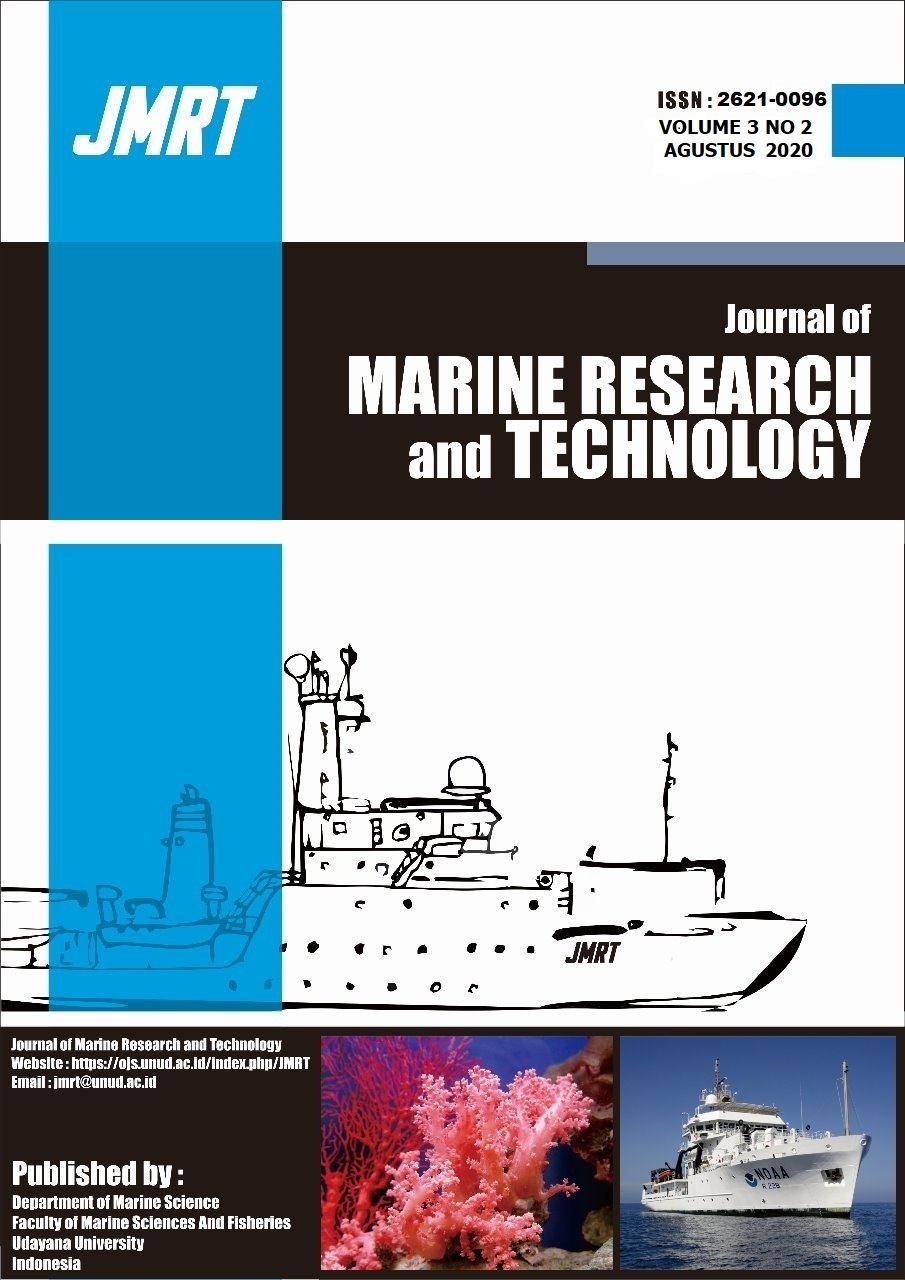Konsentrasi Logam Berat Timbal (Pb), dan Kadmium (Cd) pada Telur Penyu Lekang (Lepidochelys Olivacea) di Pulau Serangan, Bali
Lepidochelys olivacea; Heavy metal; Lead; Cadmium
Abstract
Sea turtles is one of the marine megafauna which has categorized as protected animal. They are able to migrate long distance along the Indian Ocean, Pacific Ocean and Atlantic Ocean. Heavy metals may enter to marine organism bodies through three ways including, food ingestion, gills, and surface diffusion of the skin. Accumulation of heavy metals in the body for a long time may disrupt the circulatory system, nerves and kidney work. The effort to increase the hatching success is very important for the turtle conservation. Therefore, this study was aims to examined the concentration of heavy metals detected in the eggs of olive ridley (Lepidochelys olivacea) turtle.This study was conducted between July - September 2019 in Serangan Island. The method used in this study was a purposive random sampling, determined by four olive ridley’s nests in their nesting period with each nest of 5 egg samples. The heavy metal contents were analyzed with Atomic Absorption Spectrophotometer. The results showed that Pb concentrations ranged from 5.50-103.66 mg/kg with an average of 36.49 mg/kg, while Cd concentrations ranged from 0.07-16.25 mg/kg with an average of 0.96 mg/kg. The concentrations of heavy metals in sea turtle eggs may come from their parent, which might be already accumulated heavy metals in their tissues. This might occur due to the substances in the eggshell are capable to absorb heavy metals. The results of this study highlight the average concentration of heavy metals in L. olivacea eggs exceeded the threshold of heavy metals for egg products set by the Indonesian Regulation of the Food and Drug Control Agency (BPOM) No. 5 of 2018. This indicates that the eggs of Olive ridley sea turtle in the region are unsafe for human consumption. In addition sea turtle eggs are in high risk for human consumption because they contain heavy metals. All types of turtle products are also protected by UU No. 5 of 1990, therefore the culture of the community in consuming and trading turtle products must be stopped.
Downloads
Copyright Notice
The copyright to this article is transferred to Journal of Marine Research and Technology (JMRT). The copyright transfer covers the exclusive right and license to reproduce, publish, distribute and archive the article in all forms and media of expression now known or developed in the future, including reprints, translations, photographic reproductions, microform, electronic form (offline, online) or any other reproductions of similar nature.






